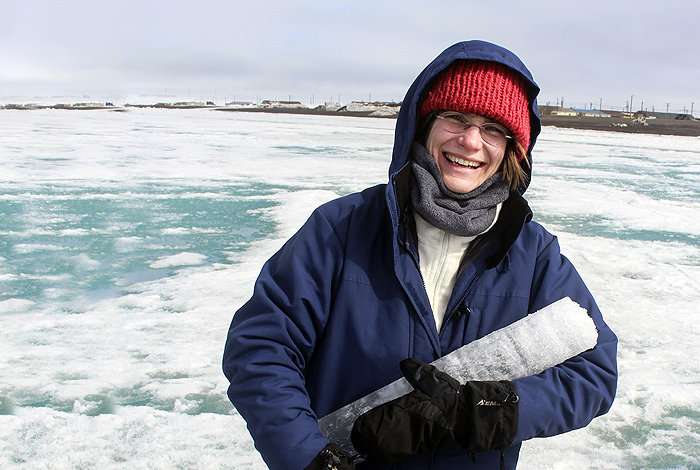Arctic ice model upgrade to benefit polar research, industry and military

An update for an internationally vital sea-ice computer model developed at Los Alamos National Laboratory with several collaborating groups, called CICE version 6.0, is being released this week, a timely tool that supports more accurate forecasting of ice occurrence and global climate modeling.
"This update improves our ability to understand a type of anchored ice, called land-fast ice, that is attached to the shore or sea bottom and can block shipping lanes and northern ports," said Elizabeth Hunke, lead developer of the CICE model. "The polar regions are not desolate, they're actually alive with shipping, energy development, fishing, hunting, research and military defense operations," Hunke noted. "Sea ice makes navigation hazardous, as thick ice can block fishing boats and even makes it difficult for U.S. Navy submarines to surface during an emergency. Our model is essential to helping agencies predict the polar sea conditions for developing infrastructure, shipping and transportation plans," she said. "In addition, the new tool can provide insights into the complex ecosystems of the polar region such as the algae that is essential to some polar creatures."
The CICE software model was originally developed at Los Alamos in the early 1990s by Hunke and coworkers, helping make sense of the millions of bits of data that stream in from satellites, ships, and on-site researchers as they explore the water, ice and atmosphere of the polar regions. Since then, CICE has been a key part of the predictive capability for the U.S. Navy, the National Oceanic and Atmospheric Association, and the National Ice Center. CICE is also widely used for earth-system research in academic and government institutions worldwide.
As part of CICE version 6.0, a second modular software package of sea-ice-column physics is being released, called Icepack version 1.1. The Icepack software provides the sea-ice community with insights into thermodynamics, biogeochemistry, mechanical ridging and ice thickness, and it can be ported to a variety of computer models at differing agencies.
Provided by Los Alamos National Laboratory



















